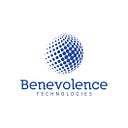The 5 Most Important Things We’ve Learned About Enterprise Content Management in 2021
About 20 years ago, the term Enterprise Content Management (ECM) first entered our minds. As the scope of technology changed, so did the concept, but that’s the whole point. My favorite compliments are as follows:
Enterprise Content Management (ECM) is a strategy for the integrated management of all content in an organization, allowing people and systems to find and use content from any business context.
collaborated on this definition a decade ago with a group of people in the ECM industry. It still reflects how ECM fits into organizations today.
But in the decades since the ECM first came out, we’ve learned a lot about how the ECM works. Here are five big lessons:
1. Leave UX to the experts
The most important lesson is the importance of user experience (UX) for any content-based application. Teams need to design UX around the work, not the basic content system. The user interface (UI) provided by content management vendors is useful for administrators, but vendors have not designed these UIs to be how people work. How could they? Vendors offer the same UI, but each organization is different — some.
The only exception to the rule is the desktop sync feature, which vendors have designed to show how people use network share drives (which serves as a terrifying reminder that network share drives still exist.)
Designing and deploying applications focused on a given team’s mission and bringing content to the forefront, in my experience, led to more successful deployments than any other tip in this article. Every custom UI that my teams designed and focused on getting the job done was a success. Every organization that defaults to the vendor’s UI was assigned a replacement in less than five years.
2. Matter of material model
We always know that. The industry has taken a long time to learn how to best implement models. Content models need to be lightweight and focus on the businesses they represent. They shouldn’t just be about metadata lists.
Twenty years ago, metadata was the focus. Businesses had a strong desire to take over everything. Organizations are now moving from folder structures and metadata lists to content models that reflect how content works in support of their mission. The resulting system is much more flexible and dynamic, which can help the organization grow as well as better.
3. Content management is not the point
Initially, the industry saw ECM as the ultimate goal. ECM was about how you managed the record and saved all the content. Implementing good content management is more common in a database than in a business solution. It stores content and centralizes general content control in the same way that the database controls data. Using ECM as a resource, not the end, will move your organization forward to building a successful solution.
4. Elimination of the Big Bang Theory
For a large part of the time, the industry preached the low-hanging fruit approach: solve a simple problem to make it clear how ECM technology can work. The industry assumes that success will lead to adoption. Although this often happened, the limited approach damaged the next project, which inevitably required more effort.
Today’s point of view differs from one important aspect. We’ve changed the mindset of low-hanging fruit with a focus on content management for a basic process that the organization is automating. The first plan does not have to be simple. It needs to support an internal initiative that provides broad value rather than just content management.
5. We’re just getting started with content management
This last lesson focuses on patience. We are in the age of information. The keyword here is “age”. Preliminary predictions suggest that we will solve the content problem in a couple of decades. They were wrong. Each year brings more complications. Meanwhile, the volume of content is growing rapidly, and more content formats are emerging regularly. Furthermore, we still need to address many failed attempts.
None of these challenges lead to the growing challenge that is being introduced for content management, the most successful collaboration platform. Content management is thought-provoking on collaboration platforms, which is fine because online collaboration is difficult because there is no control over the content on the site. This is just another challenge that the industry needs to address.
Content Management Professionals: Your Local Information Blacksmith.
This is the beginning of a new era. We’ve seen computers move from mainframes in large organizations to our pockets and home appliances. The Internet has made the flow of information faster than we know how to handle it. What we can do on our phones today makes every Star Trek episode before 2007 historic.
However, this is only the beginning. The dominance of information is not ending. We are unlikely to make progress until the next age when information management is global.
Content management professionals today are like blacksmiths of the Iron Age. We learn how to take these new tools and apply them to old problems. And we’re still exploring new tools. We are exploring our limits, but it is hard work. Our brains sometimes break old boundaries while we see new abilities grow rapidly.
The key to progress is to get what we have learned and keep building. Unless success is the default for every project, we need to work together to find the right patterns. Most importantly, don’t give up. Today’s Information Professional is a trailblazer doing hard, but important work. Commit to keep things moving.
